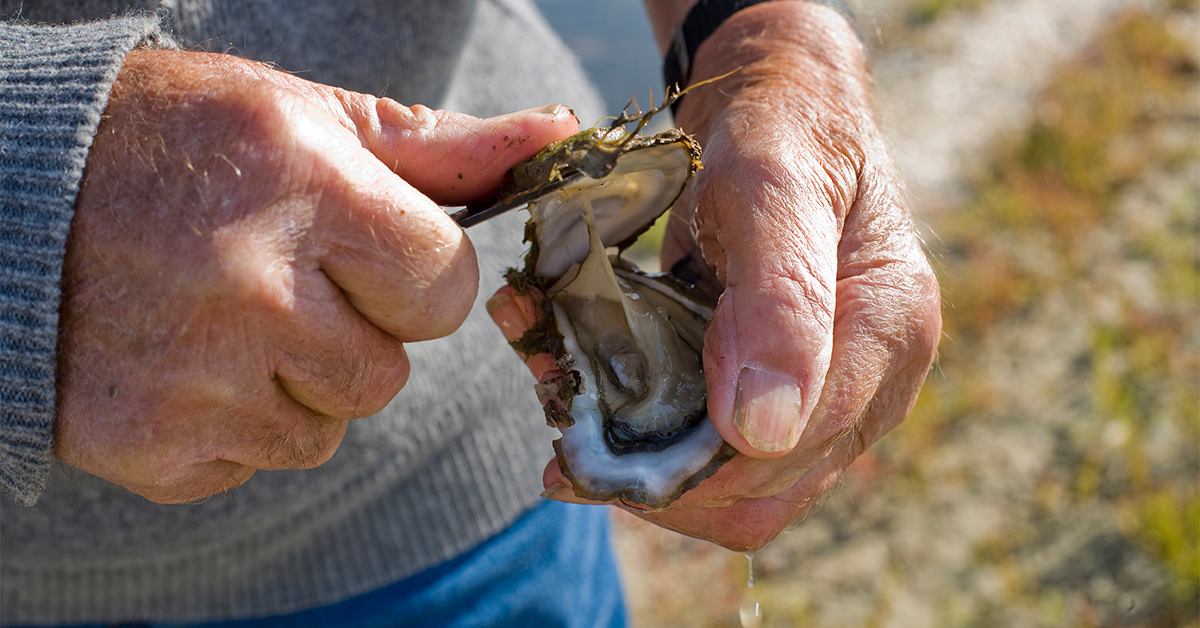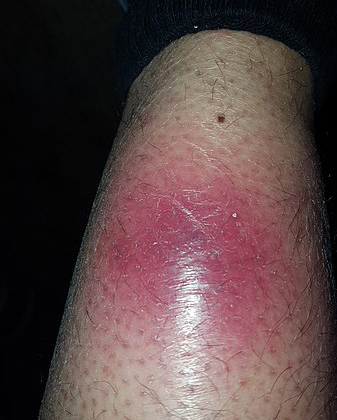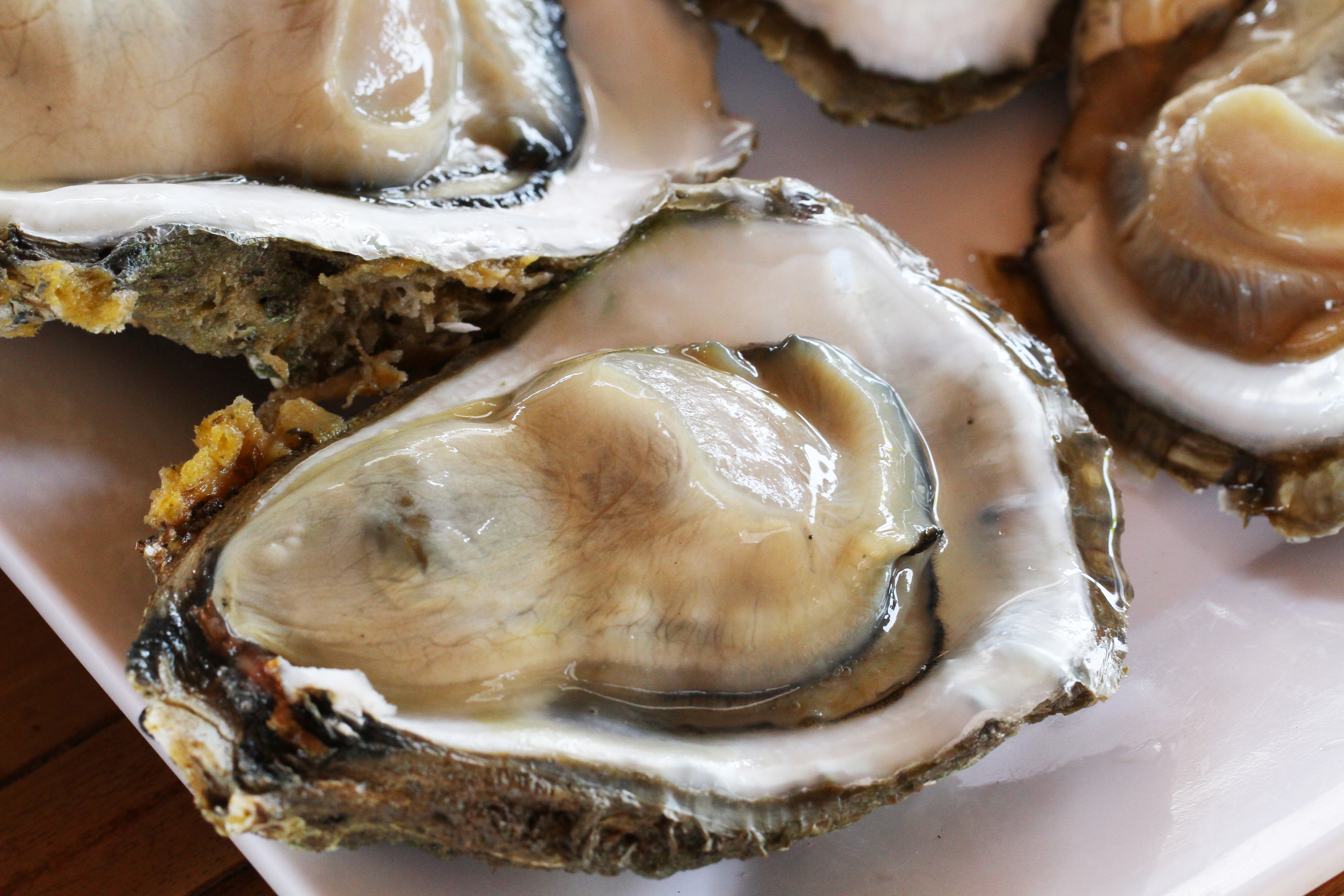Do Raw Oysters Contain Flesh-Eating Bacteria?
- By: Joseph Simonds
- on
- Found In: Fish Recipes, Fishing Tips

Do raw oysters contain flesh-eating bacteria?
The short answer: they can.
Will you get an infection if you eat a raw oyster?
That’s a question that needs a bit longer of an answer.
Thankfully, Dr. Brian Labus, the Assistant Professor of Epidemiology and Biostatistics at UNLV, recently wrote an article explaining this answer on TheConversation.com.
We’ll dive into his article with some support from the CDC on our journey to help you decide if you’ll continue eating this popular shellfish raw.
(P.S. This article about the overharvesting of oysters can also help you make that decision.)
What Is “Flesh-Eating Bacteria”?

Vibrio vulnificus, aka flesh-eating bacteria, lives in the warm salty waters of the Gulf of Mexico and southern parts of the Atlantic and Pacific Oceans.
Since it loves warm water, most infections occur from May through October when the water is warmest (although cases have been reported year-round).
Side note: this bacteria doesn’t actually eat your flesh; the effects of the infection just make it appear to be.
There are two common ways that this bacteria enters your body and causes an infection:
- It enters through an open wound
- It enters through ingestion
If you have an open wound such as a cut, it’s best to either cover it with a waterproof bandage or let it heal before going in the water.
If you notice redness or swelling around the wound, call your doctor.
The other common way this bacteria can infect you is via ingestion, most commonly by eating raw oysters, according the CDC.
Since oysters filter and eat tiny particles from the water (including bacteria), they can have a high concentration of this flesh-eating bacteria.
You’re most likely to get a stomach ache if you eat an infected oyster, but skin and bloodstream infections are possible as well.
Again, if you’re experiencing these symptoms after eating raw oysters, call your doctor.
Who’s Most Likely To Become Infected?

Alright now just because this bacteria is in an oyster you ate, or is in the water you’re swimming in, doesn’t mean you’re guaranteed to be infected.
For one, these infections are rare (CDC estimates 205 infections in the US per year).
Also, most of the people infected are males over 40 with an underlying health condition, such as alcoholism, diabetes, or liver or kidney disease.
But for good measure, continue on for tips on avoiding contracting this potentially deadly disease.
How To Avoid A Flesh-Eating Bacteria Infection
Since we know the two ways you contract this bacteria is ingestion and through an open wound, take these precautions to help prevent an infection:
- Don’t go in the water with open wounds
- If you do have an open wound, a waterproof bandage can help
- Cook oysters (don’t eat them raw)
If you do have stomach pain after eating oysters or notice redness or swelling around a wound after swimming in salt or brackish water, make sure to call your doctor.
Conclusion

A big thank you to Dr. Brian Labus and the CDC for sharing these enlightening articles about the potential dangers of flesh-eating bacteria.
Although raw oysters are very popular, you might want to think twice before eating them.
There’s no way to tell if an oyster contains this bacteria (they all smell, look and taste the same), so this isn’t like milk where you can look at the date or give it a whiff and know it’s bad.
And here’s another reason to consider not eating them: oysters are being overharvested.
Oysters are disappearing at an alarming rate and if we’re not careful, they could be gone forever.
Read more about that in this article.
Know someone who needs to be warned about the dangers involved with eating raw oysters? TAG or SHARE this with them!
P.S. If you want the best fishing spots, discounts on fishing gear, and to stay up to date with what and where the fish are biting right now, join the Insider Club.
Do You Want To Quickly Find New Fishing Spots In Your Area?
Then you’ve got to see this private fishing club!
Here’s what you’ll receive today:
- Weekly fishing reports and TRENDS revealing where the inshore fish are feeding all year long
- Weekly “spot dissection” videos that walk you through all the best spots in certain areas
- Exclusive fishing tips from the PROS you can’t find anywhere else
- Everything you need to start catching fish more consistently (regardless if you fish out of a boat, kayak, or land).
Click here to join today.
Related articles:
Related categories:
STOP WASTING TIME ON THE WATER!
Do what the “SMART ANGLERS” are doing and join the Insider Club.
Here’s what you’ll receive today when you join:
- Weekly fishing reports and TRENDS revealing exactly where you should fish every trip
- Weekly “spot dissection” videos that walk you through all the best spots in your area
- Exclusive fishing tips from the PROS you can’t find anywhere else
- Everything you need to start catching fish more consistently (regardless if you fish out of a boat, kayak, or land).









Yes it’s real I grew up on cape cod Massachusetts I have eaten raw oysters all my life 50 + years. This last October I was Diagnosed with it after eating them at a wedding they were from the Rappahannock area in Va. It was not fun and the health department gets involved when they find out and they will if you go to a Doctor and have test run for your illness. Not to say I won’t eat them again but would stick to the cold water verity and only in cold months remember the saying months ending in (ER)